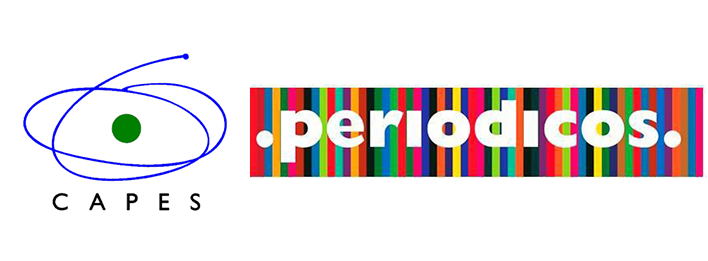Expanding Research Horizons: use of online interviews in Consumer Culture Theory
DOI:
https://doi.org/10.29149/mtr.v8i2.7603Palavras-chave:
Online Interview, Consumer Culture Theory, Digital Technologies for Information and CommunicationResumo
Consumer Culture Theory (CCT) is the consumer research culturalist tradition. With the deterritorialization of culture, networked cultural connections fluidly encompass social and economic dynamics. The Internet has become a cultural network that allows for mediated social interactions. In this context, online interviews emerged as an adaptation of face-to-face interviews and a means of accessing individuals from physically dispersed cultural contexts, therefore, suitable for the CCT agenda. Thus, this research seeks to characterize the use of qualitative online interviews through Digital Technologies for Information and Communication in CCT research. To this end, we analyzed a research corpus composed of articles that adopted the online interview. The articles were published in the main international marketing journals recognized for publishing works in the culturalist tradition of consumer research. We identified that online interviews have gain resonance in the field, through different qualitative research methods, with a focus on access to spatially dispersed consumers. However, little emphasis has been given to the operationalization of the interviews. Thus, we concluded that discussions about the technique's use would be suitable for its broader and more transparent adoption.
Referências
Alhashem, M., Moraes, C., & Szmigin, I. T. (2020). Use and social value in peer-to-peer prosumption communities. European Journal of Marketing, ahead-of-print, https://doi.org/10.1108/EJM-03-2019-0235
Arnould, E. J., & Thompson, C. (2005). Consumer culture theory (CCT): Twenty years of research. Journal of Consumer Research, 31(4), 868-882.
Arnould, E. J., & Thompson, C. (2015). Introduction: Consumer Culture Theory: Ten Years Gone (and Beyond). Consumer Culture Theory (Research in Consumer Behavior, Vol. 17, pp. 1-21), Emerald Group Publishing Limited.
Arvidsson, A., Bradshaw, A., Hulme, A., & Canniford, R. (2018). The Future of Community Research: A Conversation with Alison Hulme, Alan Bradshaw and Adam Arvidsson. Journal of Marketing Management, 34(7–8), 694–704.
Athwal, N., & Harris, L. C. (2018). Examining how brand authenticity is established and maintained: the case of the Reverso. Journal of Marketing Management, 34(3-4), 347-369.
Bardhi, F., Eckhardt, G., & Arnould, E. J. (2012). Liquid Relationship to Possessions. Journal of Consumer Research, 39(3), 510-529.
Bartmanski, D.; Woodward, I. (2015). The vinyl: The analogue medium in the age of digital reproduction. Journal of Consumer Culture, 15(1), 3–27.
Berge, S. (2017). Food co-operatives sustainably managing common pool resources as hyper-communities as outlined by Consumer Culture Theory. International Journal of Consumer Studies, 41(5), 509-517
Beverland, M. B., Eckhardt, G. M., Sands, S., & Shankar, A. (2020). How Brands Craft National Identity. Journal of Consumer Research, ucaa062, https://doi.org/10.1093/jcr/ucaa062
Borgerson, J., & Miller, D. (2016). Scalable sociality and “How the world changed social media”: conversation with Daniel Miller. Consumption Markets & Culture, 19(6), 520-533.
Bradshaw, A., & Dholakia, N. (2012). Outsider's insights: (mis)understanding A. Fuat Fırat on consumption, markets, and culture. Consumption Markets & Culture, 15(1), 117-131.
Campbell, N., Sinclair, G., & Browne, S. (2019). Preparing for a world without markets: legitimizing strategies of preppers. Journal of Marketing Management, 35(9-10), 798-817.
Casotti, L. M., & Suarez, M. C. (2016). DEZ ANOS DE CONSUMER CULTURE THEORY: DELIMITAÇÕES E ABERTURAS. Revista de Administração de Empresas, 56(3), 353-359.
Chimenti, G. (2020). Conceptual controversies at the boundaries between markets: the case of ridesharing. Consumption Markets & Culture, 23(2), 130-153.
Corciolani, M. (2014). How do authenticity dramas develop? An analysis of Afterhours fans’ responses to the band’s participation in the Sanremo music festival. Marketing Theory, 14(2), 185-206.
Creswell, J. W. (2010). Projeto de pesquisa: Métodos qualitativos, quantitativos e mistos. 3. Ed. Porto Alegre: Artmed.
Darmody, A., Yuksel, M., & Venkatraman, M. (2017). The work of mapping and the mapping of work: prosumer roles in crowdsourced map. Journal of Marketing Management, 33(13-14), 1093-1119.
Daskalopoulou, A., & Skandalis, A. (2019). Consumption field driven entrepreneurship (CFDE). European Journal of Marketing, 53(1), 63-82.
Dean, A. K. (2019). The enchanted snake and the forbidden fruit: the ayahuasca ‘fairy tale’ tourist. Journal of Marketing Management, 35(9-10), 818-844.
Denzin, N. K., & Lincoln, Y. S. (2000). The handbook of qualitative research. London: Sage.
Dessart, L., Veloutsou, C., Morgan-Thomas, A. (2016). Capturing consumer engagement: duality, dimensionality, and measurement. Journal of Marketing Management, 32(5-6), 399-426.
Dolbec, P.-Y., & Fischer, E. (2015). Refashioning a Field? Connected Consumers and Institutional Dynamics in Markets. Journal of Consumer Research, 41(6), 1447-1468.
Drumwright, M. E., & Kamal, S. (2016). Habitus, doxa, and ethics: insights from advertising in emerging markets in the Middle East and North Africa. Consumption Markets & Culture, 19(2), 172-205.
Emontspool, J., & Georgi, C. A (2017). cosmopolitan return to nature: how combining aesthetization and moralization processes expresses distinction in food consumption. Consumption Markets & Culture, 20(4), 306-328.
Feiereisen, S., Rasolofoarison, D., Russell, C. A., Schau, H. J., Fischer, E., Campbell, M. C., & Humphreys, A. (2020). One Brand, Many Trajectories: Narrative Navigation in Transmedia. Journal of Consumer Research, ucaa046, https://doi.org/10.1093/jcr/ucaa046
Figueiredo, B., & Scaraboto, D. (2016). The Systemic Creation of Value through Circulation in Collaborative Consumer Networks. Journal of Consumer Research, 43(4), 509-533.
Figueiredo, B., & Uncles, M. (2014). Moving across time and space: temporal management and structuration of consumption in conditions of global mobility. Consumption Markets & Culture, 18(1), 39-54.
Freund, J. (2015). Rev Billy vs. the Market: a sane man in a world of omnipotent fantasies. Journal of Marketing Management, 31(13-14), 1529-1551.
Gaiao, B. F. S., Souza, I. L., & Leão, A. L. M. S. (2012). Consumer culture theory (CCT) já é uma escola de pensamento em marketing? Revista de Administração de Empresas, 52(3), 330-344.
Gamble, J. R. (2019). Marketing madness or financial folly? Implementing equity crowdfunding in the record industry. European Journal of Marketing, 53(3), 412-441.
Giesler, M., & Veresiu, E. (2014). Creating the Responsible Consumer: Moralistic Governance Regimes and Consumer Subjectivity. Journal of Consumer Research, 41(3), 840-857.
Gordon-Wilson, S. (2021). Consumption practices during the COVID-19 crisis. International Journal of Consumer Studies, Early View, https://doi.org/10.1111/ijcs.12701
Goulart Sztejnberg, R., & Giovanardi, M. (2017). The ambiguity of place branding consultancy: working with stakeholders in Rio de Janeiro. Journal of Marketing Management, 33(5-6), 421-445.
Harwood, T., & Garry, T. (2010). ‘It's Mine!’ – Participation and ownership within virtual co-creation environments. Journal of Marketing Management, 26(3-4), 290-301.
Huseman, K. C., Eckhardt, G. M. (2019). Consumer Deceleration. Journal of Consumer Research, 45(6), 1142-1163.
Iacono, L., Symonds, P., Brown, D. H. K. (2016). Skype as a tool for qualitative research interviews. Sociological Research Online, 21(2), 1-15.
James, N., & Busher, H. (2006) Credibility, authenticity and voice: Dilemmas in online interviewing. Qualitative Research, 6(3), 403–420.
Jantzen, C., Fitchett, J., Østergaard, P., & Vetner, M. (2012). Just for fun? The emotional regime of experiential consumption. Marketing Theory, 12(2), 137–154.
Jones, S.; Cronin, J., & Piacentini, M. (2020). The interrupted world: Surrealist disruption and altered escapes from reality. Marketing Theory, 20(4), 459-480.
Leão, A. L. M. S., Paiva Jr., F. G., & Mello, S. C. B. (2016). Abordagem Qualitativas na Pesquisa em Administração. Recife: Editora UFPE.
Koponen, S., & Mustonen, P. (2020). Eating alone, or commensality redefined? Solo dining and the aestheticization of eating (out). Journal of Consumer Culture, OnlineFirst https://doi.org/10.1177%2F1469540520955219
Kostakis, V., Niaros, V., & Giotitsas, C. (2015). Production and governance in hackerspaces: A manifestation of Commons-based peer production in the physical realm? International Journal of Cultural Studies, 18(5), 555–573.
Kozinets, R. V. (2020). Netnography: The essential guide to qualitative social media research. Doing ethnographic research online. New York: Sage.
Kozinets, R. V., & Jenkins, H. (2021). Consumer movements, brand activism, and the participatory politics of media: A conversation. Journal of Consumer Culture, OnlineFirst, https://doi.org/10.1177%2F14695405211013993
Kozinets, R., Patterson, A., & Ashman, R. (2016). Networks of Desire: How Technology Increases Our Passion to Consume. Journal of Consumer Research, 43(5), 659-682.
Le-Phuong Nguyen, K., Harman, V., & Cappellini, B. (2017). Playing with class: Middle-class intensive mothering and the consumption of children’s toys in Vietnam. International Journal of Consumer Studies, 41(5), 449-456.
Liu, C. (2019). Men and their groomed body. European Journal of Marketing, 53(5), 1015-1034.
Macleod, P. J. (2020). Influences on ethical decision-making among porn consumers: The role of stigma. Journal of Consumer Culture, OnlineFirst https://doi.org/10.1177%2F1469540520970247
Madianou, M., & Miller, D. (2012). Polymedia: Towards a new theory of digital media in interpersonal communication. International Journal of Cultural Studies, 16(2), 169–187.
Marchant, C., & O’Donohoe, S. (2014). Edging out of the nest: emerging adults’ use of smartphones in maintaining and transforming family relationships. Journal of Marketing Management, 30(15-16), 1554–1576.
McAlexander, J. H., Dufault, B. L., Marting, D. M., & Schouten, J. W. (2014). The Marketization of Religion: Field, Capital, and Consumer Identity. Journal of Consumer Research, 41(3), 858-875.
McCracken, G. (1988). The long interview. Newbury Park: SAGE.
Moisander, J., Valtonen, A., & Hirsto, H. (2009). Personal Interviews in Cultural Consumer Research –Post-Structuralist Challenges. Consumption, Markets and Culture, 12(4), 329–348.
Murray, D. C. (2015). Notes to self: the visual culture of selfies in the age of social media. Consumption Markets & Culture, 18(6), 490–516.
Nilsson, J. (2020). Producing consumers: market researchers’ selection and conception of focus group participants. Consumption Markets & Culture, 23(4), 376–389.
Oakes, S., Brownlie, D., & Dennis, N. (2014). Ubiquitous music: A summary and future research agenda. Marketing Theory, 14(2), 141-145.
Obiegbu, C. et al. (2019). Co-constructing loyalty in an era of digital music fandom. European Journal of Marketing, 53(3), 463-482.
O’Leary, K., & Murphy, S. (2019). Moving beyond Goffman: the performativity of anonymity on SNS. European Journal of Marketing, 53(1), 83-107.
Paiva F. G. Jr., Leão, A. L. M. S., & Mello, S. C. (2011). Validade e Confiabilidade na Pesquisa Qualitativa em Administração. Revista de Ciências da Administração, 13(31), 190-209.
Persson, O., & Klintman, M. (2021). Framing sufficiency: Strategies of environmental non-governmental organisations towards reduced material consumption. Journal of Consumer Culture, OnlineFirst https://doi.org/10.1177%2F1469540521990857
Philip, H. E., Ozanne, L. K., & Ballantine, P. (2015). Examining temporary disposition and acquisition in peer-to-peer renting. Journal of Marketing Management, 31(11-12), 1310-1332.
Podoshen, J. S., Venkatesh, V., & Jin, Z. (2014). Theoretical reflections on dystopian consumer culture: Black metal. Marketing Theory, 14(2), 207-227.
Pulh, M., Mencarelli, R., & Chaney, D. (2019). The consequences of the heritage experience in brand museums on the consumer–brand relationship. European Journal of Marketing, 53(10), 2193-2212.
Ravenelle, A. J. (2020). Digitalization and the hybridization of markets and circuits in Airbnb. Consumption Markets & Culture, 23(2), 154–173.
Reid, E., & Duffy, K. (2018). A netnographic sensibility: developing the netnographic/social listening boundaries. Journal of Marketing Management, 34(3-4), 263-286.
Rojas Gaviria, P. et al. (2019). Motherhood in migration: schools as acculturation agents. Consumption Markets & Culture, 22(4), 383-405
Salmons, J. (2016). Doing qualitative research online. London, England: SAGE, 2016.
Sandes, F. S., Leandro, J., Boaventura, P., Silva Jr, A. F. (2019). I do not own a car any more: An analysis of possessions’ disposal and changes in consumers’ identities. International Journal of Consumer Studies, 43(5), 446-456.
Scaraboto, D. (2015). Selling, Sharing, and Everything In Between: The Hybrid Economies of Collaborative Networks. Journal of Consumer Research, 42(1), 152-176.
Scarborough, R. C., & McCoy, C. A. (2014). Moral reactions to reality TV: Television viewers' endogenous and exogenous loci of morality. Journal of Consumer Culture, 16(1), 164-191.
Schwarz, O. (2009). Good Young Nostalgia: Camera phones and technologies of self among Israeli youths. Journal of Consumer Culture, 9(3), 348–376.
Siebert, A. (2013). How Non-Western Consumers Negotiate Competing Ideologies of Sharing through the Consumption of Digital Technology. In: R. W. Belk & R. Llamas (Eds.) The Routledge Companion to Digital Consumption (pp. 137-147) New York: Routledge.
Souza, I. L., Gaião, B. F., Silva, J. S., & Leão, A. L. M. S. (2013). Uma Abordagem Alternativa para a Pesquisa do Consumidor: Adoção da Consumer Culture Theory (CCT) no Brasil. Revista Alcance, 20(3), 383-399.
Tan, C. K. K., & Xu, Z. (2019). The real digital househusbands of China: The alienable affects of China’s male ‘virtual lovers. Journal of Consumer Culture, OnlineFirst, https://doi.org/10.1177%2F1469540519899968
Turunen, L. L. M., & Pöyry, E. (2019). Shopping with the resale value in mind: A study on second‐hand luxury consumers. International Journal of Consumer Studies, 43(6), 549–556.
Ulusoy, E., & Fırat, F. A. (2018). Toward a theory of subcultural mosaic: Fragmentation into and within subcultures. Journal of Consumer Culture, 18(1), 21-42.
Veer, E., & Golf-Papez, M. (2018). Physically freeing: breaking taboos through online displays of the sexual self. Journal of Marketing Management, 34(13-14), 1105-1125.
Veresiu, E., & Giesler, M. (2018). Beyond Acculturation: Multiculturalism and the Institutional Shaping of an Ethnic Consumer Subject. Journal of Consumer Research, 45(3), 553-570.
Viotto, M. H., Zanette, M. C., & Brito, E. P. Z. (2021). Looking good or feeling good? The dual role of the body in the taste transformation process. Consumption Markets & Culture, 24(1), 54-74.
Viswanathan, M., & Sreekumar, A. (2019). Consumers and technology in a changing world: the perspective from subsistence marketplaces. European Journal of Marketing, 53(6), 1254-1274.
Wiederhold, M., & Martinez, L. F. (2018). Ethical consumer behavior in Germany: The attitude-behavior gap in the green apparel industry. International Journal of Consumer Studies, 42(4), 419-429.
Witteborn, S. (2019). The digital gift and aspirational mobility. International Journal of Cultural Studies, 22(6), 754-769.
Yalkin, C., & Veer, E. (2018). Taboo on TV: gender, religion, and sexual taboos in transnationally marketed Turkish soap operas. Journal of Marketing Management, 34(13-14), 1149-1171.
Zanette, M. C., & Brito, E. P. Z. (2019). Fashionable subjects and complicity resistance: power, subjectification, and bounded resistance in the context of plus-size consumers. Consumption Markets & Culture, 22(4), 363-382.
Downloads
Publicado
Como Citar
Edição
Seção
Licença
Copyright (c) 2022 Bruno Melo Moura, André Luiz Maranhão de Souza-Leão

Este trabalho está licenciado sob uma licença Creative Commons Attribution 4.0 International License.
Autores que publicam nesta revista concordam com os seguintes termos:
- Autores mantém os direitos autorais e concedem à revista, sem ônus para a mesma, o direito de primeira publicação, com o trabalho simultaneamente licenciado sob a Licença Creative Commons Attribution que permite o compartilhamento do trabalho com reconhecimento da autoria e publicação inicial nesta revista
- Autores têm autorização para assumir contratos adicionais separadamente, para distribuição não-exclusiva da versão do trabalho publicada nesta revista (ex.: publicar em repositório institucional ou como capítulo de livro), com reconhecimento de autoria e publicação inicial nesta revista.
- Autores assumem exclusiva responsabilidade pelas suas opiniões emitidas nos trabalhos publicados nesta revista
















